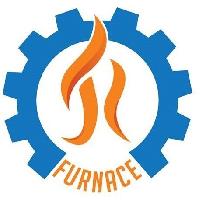Understanding Industrial Furnaces: The Backbone of Modern Manufacturing

Posted by jrfurnace
from the Business category at
29 Jul 2025 10:06:03 am.
industrial furnaces
stand as silent but essential players. From steelmaking and aerospace to ceramics and chemical processing, these high-temperature systems are vital for carrying out critical heat treatment processes. As manufacturing becomes more advanced, the demand for robust, energy-efficient, and high-performing industrial furnaces continues to grow.
What is an Industrial Furnace?
An industrial furnace is a thermal processing device used to heat materials to high temperatures for various purposes such as melting, annealing, sintering, brazing, tempering, or heat treating metals and other materials. These furnaces operate at temperatures typically ranging from 400°C to over 1800°C, depending on the application.
Industrial furnaces come in many designs, sizes, and fuel types, including electric, gas-fired, oil-fired, and hybrid systems. Each is configured to meet specific process requirements and material characteristics.
Types of Industrial Furnaces
There are numerous types of industrial furnaces, each tailored to different applications:
Box Furnaces – Enclosed furnaces used for general heat treatment like annealing or stress relief.
Pit Furnaces – Cylindrical vertical furnaces used for long or awkwardly shaped components.
Bogie Hearth Furnaces – Feature a movable hearth (bogie) and are ideal for treating heavy components.
Bell Furnaces – Consist of a heating chamber lowered over the workpiece and used for annealing or tempering.
Salt Bath Furnaces – Use molten salts to provide uniform and rapid heat transfer.
Vacuum Furnaces – Operate in a vacuum environment, minimizing contamination and oxidation.
Muffle Furnaces – Feature an isolated heating chamber for precision processes requiring clean atmospheres.
Rotary Retort and Conveyor Furnaces – Used in mass production lines for continuous operation.
Industrial furnaces are used across a wide spectrum of sectors, including:
Metallurgy: For smelting, forging, and heat-treating metals.
Aerospace: In the hardening, annealing, and tempering of high-performance alloys.
Automotive: Used to treat engine components, gears, and chassis parts.
Ceramics & Glass: Employed in firing, sintering, and glazing processes.
Electronics: For precise thermal cycling of semiconductor components.
Petrochemical & Chemical Plants: Utilized in cracking, reforming, and catalyst regeneration.
Each industry demands a specific set of features in their furnaces, such as atmosphere control, thermal uniformity, energy efficiency, and rapid heating or cooling capabilities.
Design and Construction Features
The efficiency and longevity of an industrial furnace rely heavily on its construction. Common features include:
Refractory Lining: High-temperature ceramic materials that protect the furnace shell and maintain heat.
Insulation: Ceramic fiber modules or insulating bricks reduce heat loss and improve energy efficiency.
Heating Elements: In electric furnaces, elements are made of Kanthal, silicon carbide, or molybdenum disilicide.
Burners: In gas-fired units, burners are selected for optimal flame control and fuel efficiency.
Temperature Control Systems: Advanced PLCs and thermocouples ensure accurate thermal management.
Atmosphere Control: For specific processes, inert gases or vacuum conditions prevent oxidation or contamination.
Modern industrial furnaces are engineered to meet energy-efficiency standards and reduce carbon emissions. Several advancements are contributing to greener furnace technology:
Regenerative Burners: Recover waste heat from exhaust gases and use it to preheat incoming air.
Variable Frequency Drives (VFDs): Help regulate blower and fan speeds to optimize power consumption.
Waste Heat Recovery Systems: Capture excess heat for use in other stages of the production process.
Automated Controls: Allow better process monitoring and adjustments, minimizing energy waste.
Implementing energy-saving technologies not only benefits the environment but also reduces operating costs—a key consideration for large-scale industrial users.
Challenges in Furnace Operation
Despite technological advancements, operating an industrial furnace comes with challenges:
Maintenance Downtime: Periodic shutdowns are needed for refractory lining repairs, burner cleaning, and component checks.
Temperature Uniformity: Achieving consistent heat distribution in large furnaces is a complex task.
Fuel Costs: Fluctuations in energy prices directly impact the operating costs.
Safety Risks: High temperatures and gas atmospheres require stringent safety protocols.
Solving these challenges requires a combination of smart design, automation, skilled labor, and ongoing R&D.
Innovations Driving the Future
The future of industrial furnace technology is being shaped by digitalization, automation, and sustainability. Some ongoing innovations include:
IoT Integration: Smart sensors collect real-time data on temperature, pressure, and system performance.
Predictive Maintenance: AI-powered analytics anticipate failures before they occur.
Hybrid Heating: Combining electric and gas heating for process flexibility and energy savings.
Modular Furnace Designs: Allow scalability and adaptability to changing production demands.
Industrial furnaces are integral to the modern manufacturing ecosystem. Their role in transforming raw materials into finished goods through controlled thermal processing cannot be overstated. As industries evolve, so do the requirements for more efficient, intelligent, and environmentally conscious furnace systems.
Whether you’re in the market for a new furnace, upgrading existing infrastructure, or simply learning about heat treatment technologies, understanding the types, features, and trends in industrial furnaces is crucial for informed decision-making. https://www.jrfurnace.net
0 Comments



